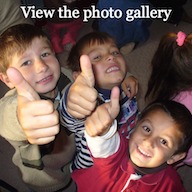An essential part of my work as a Translation Adviser (TA) in Taiwan is training indigenous Bible translators. Each of my six teams has members who have been translating the scriptures for over 10 years—some started over 50 years ago. Whether experienced translators, or recent beginners on a review team, there is always something new and helpful to learn. The same applies for me too.
Every time I visit a team (3-5 days, four times a year), I help them with translation skills and theory that members of the team need at that particular stage in the translation process. We might spend a whole day reviewing how to translate names of people and places in the Bible—over 4000 different names to check. Or we might study different ways to handle narratives or prophetic oracles versus psalms or proverbs.
Every year or two we hold an intensive Bible translation workshop for teams supported by the Bible Society in Taiwan (BSTWN). August 21-28, 2017 the BSTWN hosted a large workshop for 30 translators on six teams with active projects in ‘Amis, Bunun, Paiwan, Pinuyumayan, Tayal and Taiwanese. (The Ngudradrekai project had just finished, while the Sediq and Tsou teams were unable to attend.)
We ran this “Taiwan track” using Mandarin-Chinese as a common language—a language none of us actually claims as our mother tongue. We also ran an “English track” for 15 translators from teams working on projects in Australia, Myanmar, the Philippines and Tonga. For this regional Asia-Pacific workshop we had support from the United Bible Societies (UBS), both financial support and in the person of UBS Global Translation Advisers from Brisbane, Kuala Lumpur, Hong Kong, Paris, Buenos Aires and Iowa. During the eight-day workshop we learned about all the features and powerful tools in the UBS’s newest Bible translation software, ParaTExt8. I gave talks in Mandarin and English on “Translating Figurative Language” and “Using Base Texts and Model Texts in Translating.” Other advisers presented topics such as: Bible translation principles, the history and development of the Old Testament (OT), early Greek manuscripts of the New Testament (NT), exegesis for translation, literary genres in the Bible, names and titles for God, as well as translating key biblical terms. After the workshop, I spent the next three weeks visiting each of my indigenous teams back in their home towns, in order to follow up on the workshop and adapt the many things we had learned to their particular project and context.
In February the BSTWN asked me to become the new TA for the Tsou (or Cou) Old Testament project. So I’m serving six projects again. The Tsou NT was published for the very first time in 2014 (3000 copies for the 12,000 member Tsou nation). Since then, the 76-year old lead translator has drafted 21 shorter books in the OT. The Tsou OT project has now officially started and may take us another five years or more to complete.
March 22-23, 2018 the BSTWN ran an intensive two-day translators training workshop in the Taipei office especially for the Tsou and Sediq teams. (The Sediq project may finish this year.) I had the pleasure of teaching at this workshop along with the BSTWN’s other TA, Rev Dr Liang Wang-huei (she supports the Sediq and Taiwanese projects). It was wonderful to meet the dedicated members of these two teams and to provide them with some of the tools they need to translate well.
The focus of this workshop was an introduction to ParaTExt8. We looked at topics such as: how to use Hebrew, Greek, Chinese and English Bible versions to draft one’s own indigenous translation; how to review the draft and add notes with suggestions how to improve it; how to create wordlists and an automated spelling checker for one’s own indigenous language; how to check key biblical terms for consistent translation; how to check parallel passages throughout the Bible, and more. Three new members on the Tsou team were a bit mind-boggled at the end of the two days because of all the new things to learn. I look forward to visiting the whole team near Ali-shan (Mount Ali) in June to help them practice the many skills they were introduced to and need to master.
We have already started to plan another week-long workshop for all our translation teams in Taiwan, August 13-17, 2018. Thanks for your prayer support.
As I mentioned, translator training is an essential and on-going part of my advisory work with indigenous teams. Together we are always learning something new that helps make good draft translations even better in the long process of translating the Word of God as accurately and faithfully as we possibly can—all by the grace of God, with the help of the Holy Spirit, for the blessing of Taiwan’s indigenous peoples.







Hi David,
Thanks for your interest. Not a specific website that I am aware of.
However, you might enjoy browsing related websites like:
http://indigenous.pct.org.tw/
http://www.biblesociety-tw.org/
https://www.apc.gov.tw/portal/
https://web.alcd.tw/
Thanks for your prayers as work progresses on each Bible translation project.
Paul
Fascinating, is there a website for the Amis & Tayal translation projects?